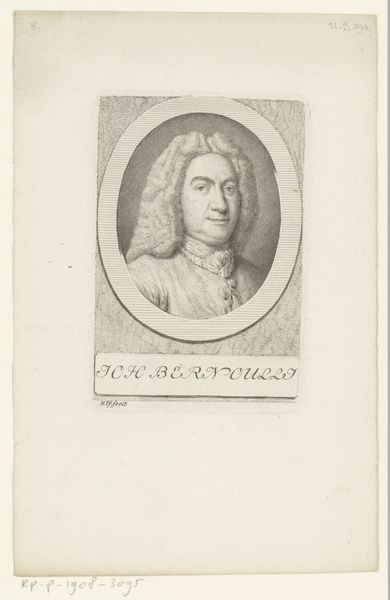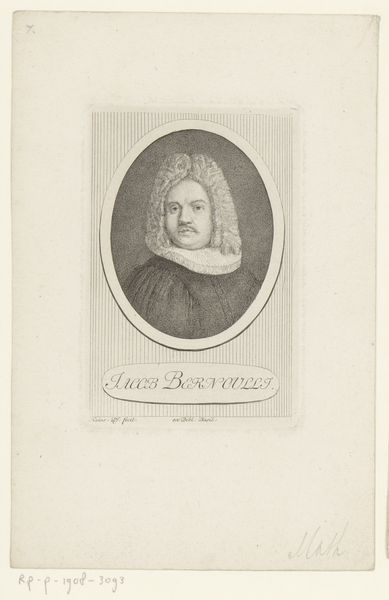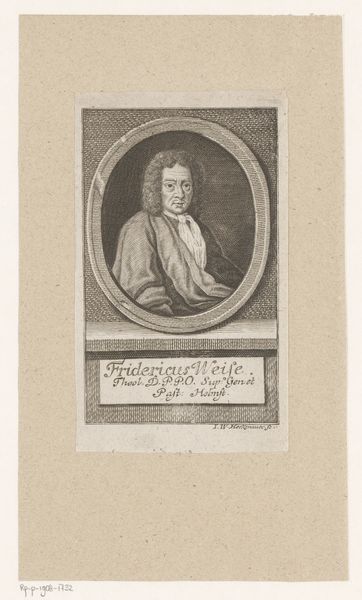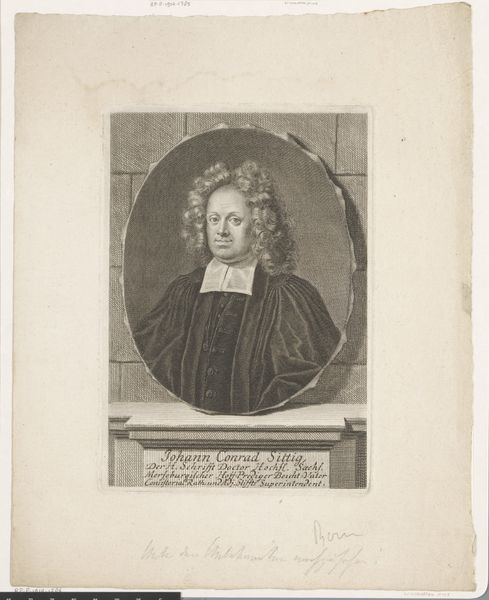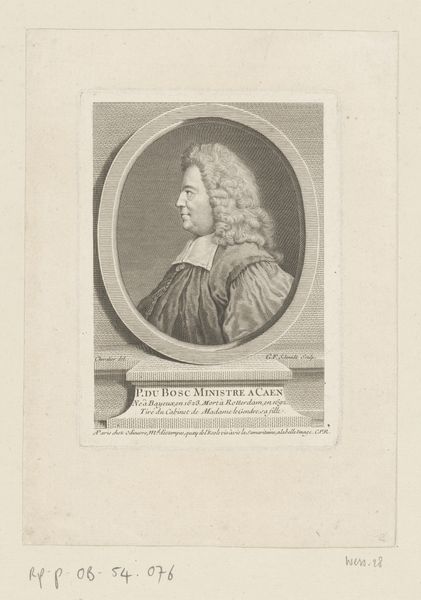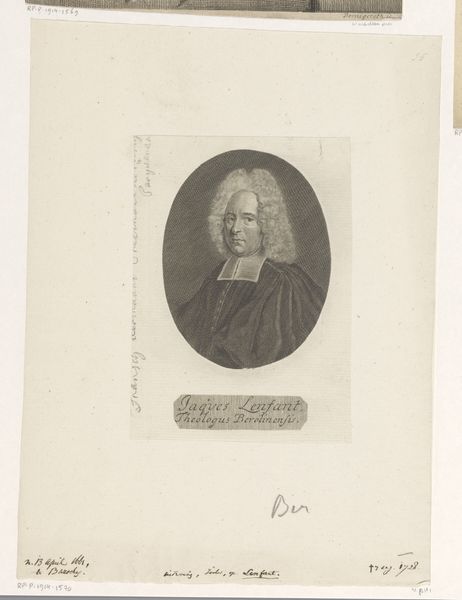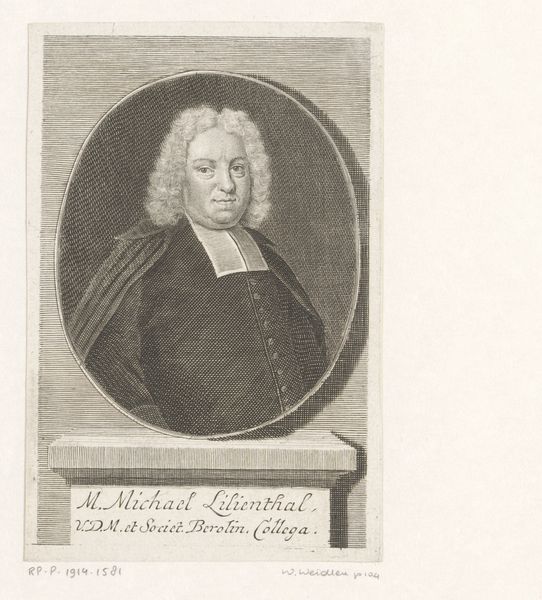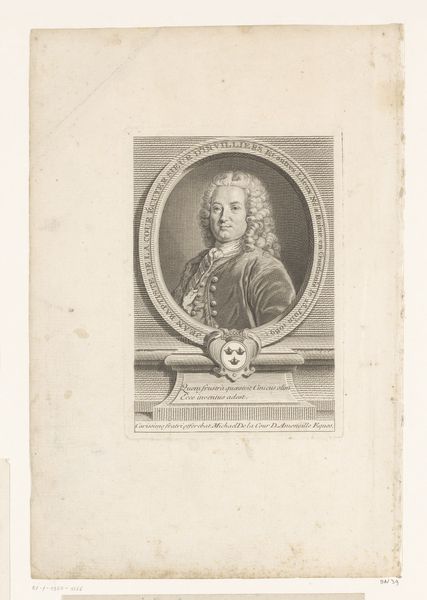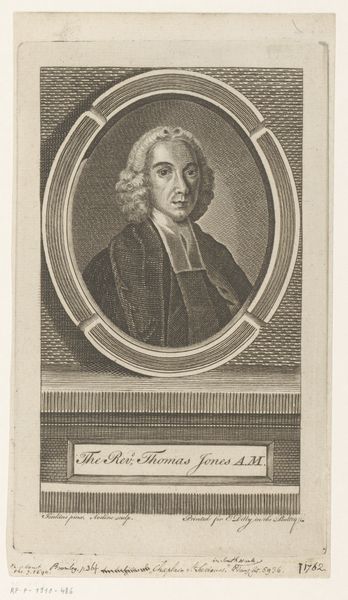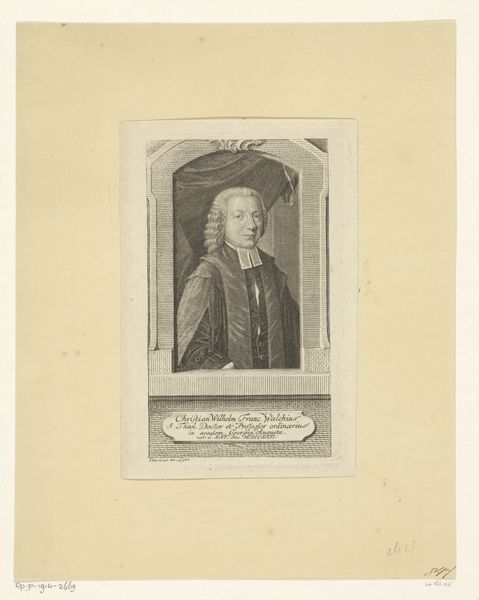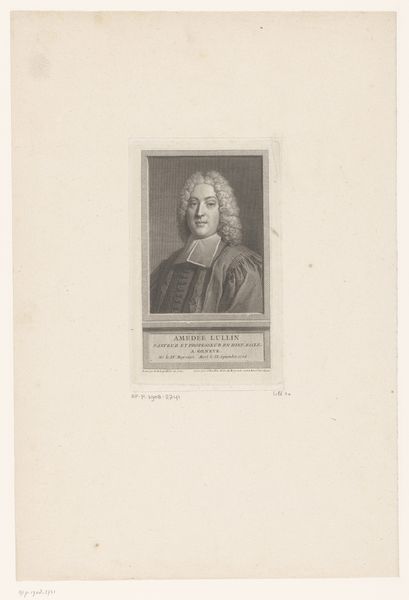
Dimensions: height 132 mm, width 92 mm
Copyright: Rijks Museum: Open Domain
Curator: This engraving, created sometime between 1759 and 1815, depicts Samuel Werenfels. The artist credited is Heinrich Pfenninger. It's a classic example of portraiture in the baroque style. Editor: My first impression is that it feels formal but also surprisingly intimate, the stippling giving the subject's face a slightly softer, almost vulnerable quality. I wonder how the engraving technique affects our perception. Curator: Engraving was a highly skilled craft, of course. Consider the time and precision required to create these delicate lines and tonal variations. The choice of this method also speaks to the role of prints in disseminating images and ideas widely during this period. This wasn't about a singular masterpiece; it was about multiplication and circulation. Editor: Absolutely. And this particular style, with its attention to detail in the lace collar and the meticulously rendered hair, suggests a specific kind of patronage. Were such engravings commissioned primarily by and for a learned audience or to project social status, what was the impact? Curator: Likely both. Werenfels himself was a theologian, so these portraits would have served to bolster his reputation amongst his peers, disseminating his likeness alongside his published writings and philosophical position. Beyond his inner circle, the circulation of portraits played into social power by immortalizing certain citizens through visual record. Editor: The engraving medium feels inherently linked to the political and social climate of the time. Consider how such readily produced images could shape public perception. It emphasizes a certain power, not just the artist’s or the subject's, but the print’s. Curator: I agree. It moves beyond the purely aesthetic into the realm of social practice. How did Pfenninger's training shape this? We have to think about workshop traditions, the materials available to him. Editor: It is fascinating to consider both aspects: a record that represents a time of societal structures alongside the craftspeople who perpetuated the values. Curator: Yes. These details highlight so many potential stories surrounding its creation. Editor: Ultimately, this simple portrait on paper prompts so much thinking.
Comments
No comments
Be the first to comment and join the conversation on the ultimate creative platform.
